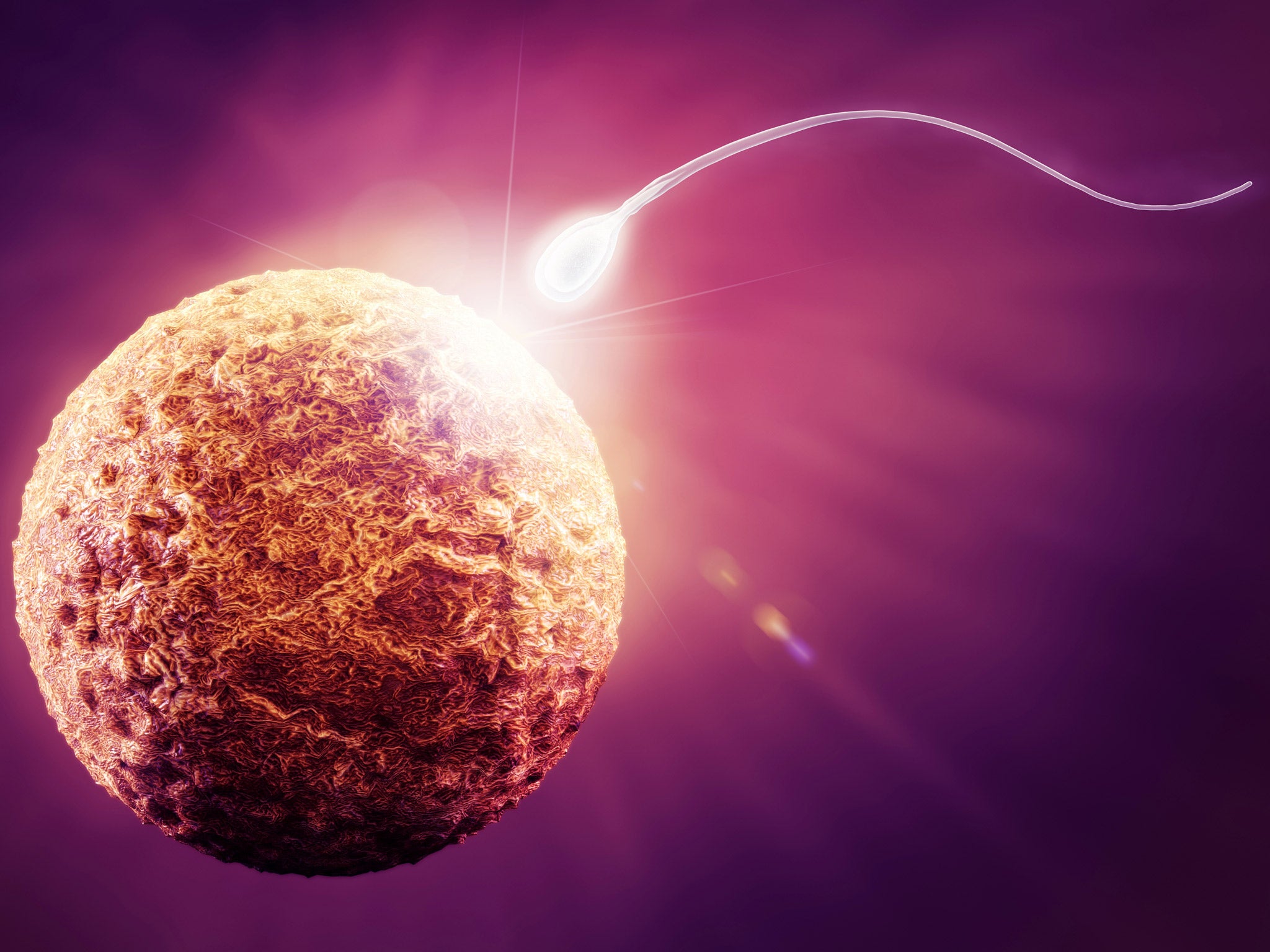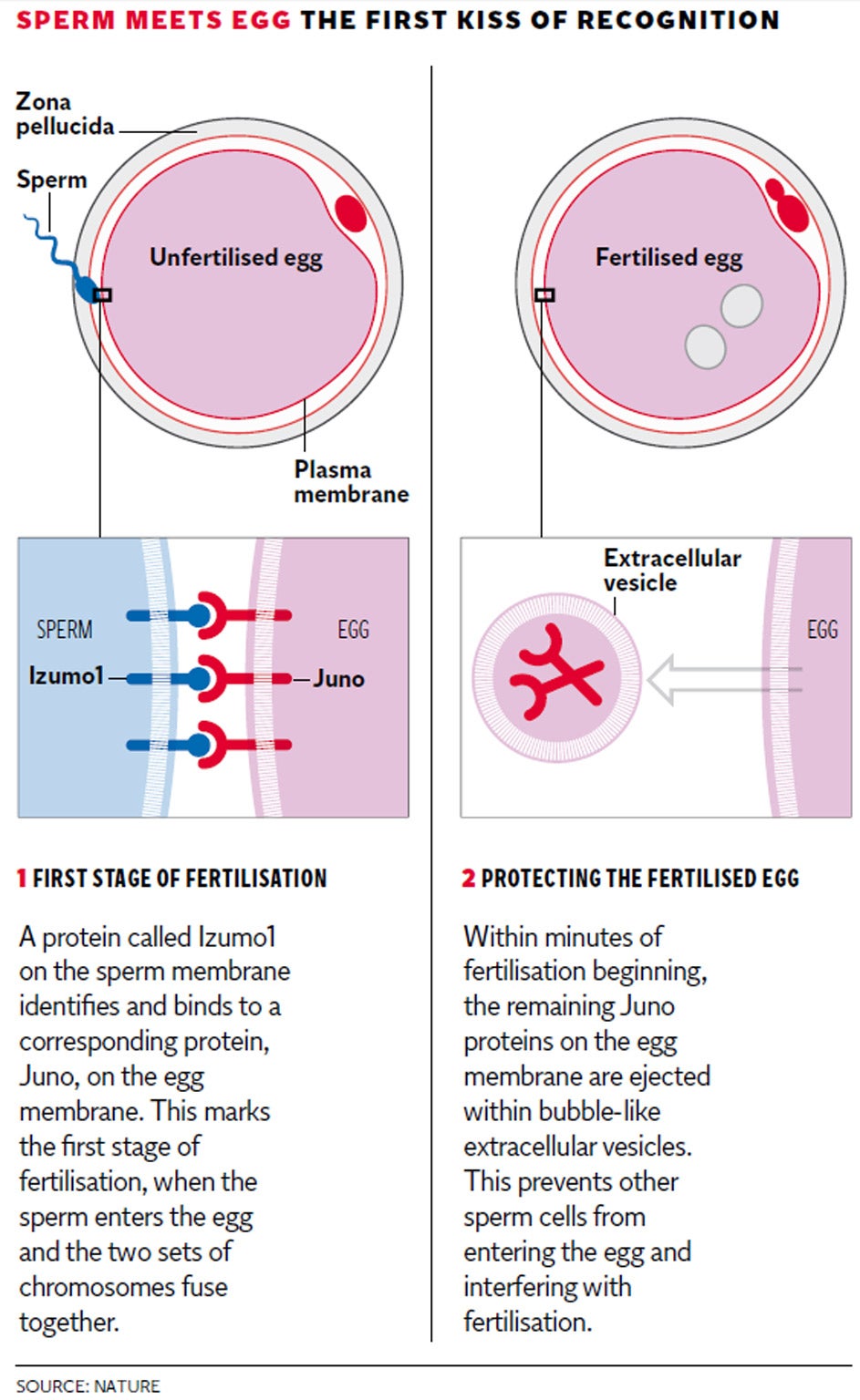The moment of conception: Scientists isolate protein that governs first contact between egg and sperm

The moment of first contact between an egg and a sperm is controlled by a key molecule on the surface of the egg cell that allows it to fuse with a sperm to form a fertilised egg, scientists have discovered.
The discovery of the egg’s initial contact point with a sperm cell is likely to have major implications for treating infertile women and could lead to new contraceptives that could prevent fertilisation without blocking the production of either eggs or sperm, researchers said.
Scientists at the Wellcome Trust Sanger Institute in Cambridge have called the egg’s protein “Juno” after the Roman Goddess of fertility and marriage and said that its discovery now explains the very first stage of conception which has until now been largely unexplained.
“We have solved a long-standing mystery in biology by identifying the molecules displayed on all sperm and egg that must bind each other at the moment we were conceived,” said Gavin Wright of the Sanger, the senior author of the study published in the journal Nature.
“Without this essential interaction, fertilisation just cannot happen. We may be able to use this discovery to improve fertility treatments and develop new contraceptives,” Dr Wright said.
“It could have benefits in both guiding the type of fertility treatment offered to women and it would also have possible benefits for contraception over a longer time frame,” he said.
In 2005, Japanese scientists identified the key protein on the surface of sperm cells that allow them to latch on to the membrane of the much larger egg cell. They called the protein Izumo1 after a Shinto shrine dedicated to marriage.
However, finding the corresponding surface protein on the egg cell proved difficult, probably because the interaction between the two cells is relatively weak and therefore not easy to measure.
However, using an artificial version of the Izumo1 protein, the Sanger scientists were able to identify the proteins that it can bind to, which led to the discovery of the Juno protein on the surface of mouse sperm cells.
By genetically engineering the mice, the scientists showed that when female animals lacked the Juno gene and its protein, they were infertile, and the same was true when male mice lacked the Izumo1 gene and its protein.
“The Izumo-Juno pairing is the first known essential interaction for sperm-egg recognition in any organism. The binding of the two proteins is very weak, which probably explains why this has remained a mystery until now,” said Enrica Bianchi of the Sanger Institute, who was the study’s first author.
“Previous work in the laboratory led us to expect the interaction to be weak, and this then guided the design of our experiments, and, after a lot of effort, it finally worked,” Dr Bianchi said.
Once the Juno protein was identified, the scientists found that it quickly disappeared from the surface of the egg cell within about 40 minutes of fertilisation. The researchers believe this prevents the fertilisation of the egg by more than one sperm.
Dr Wright said that it may be possible to identify infertile women with defective Juno proteins so that they could be offered a type of fertility treatment called intracytoplasmic sperm injection (ICSI) where individual sperm cells are injected directly into the egg to bypass the first stages of fertilisation.
Creating contraceptive vaccines that target the binding of Juno and Izumo1 may also be possible and would be especially useful for controlling the fertility of domestic animals and wildlife such as deer and badgers, he said.

Join our commenting forum
Join thought-provoking conversations, follow other Independent readers and see their replies
Comments
Bookmark popover
Removed from bookmarks